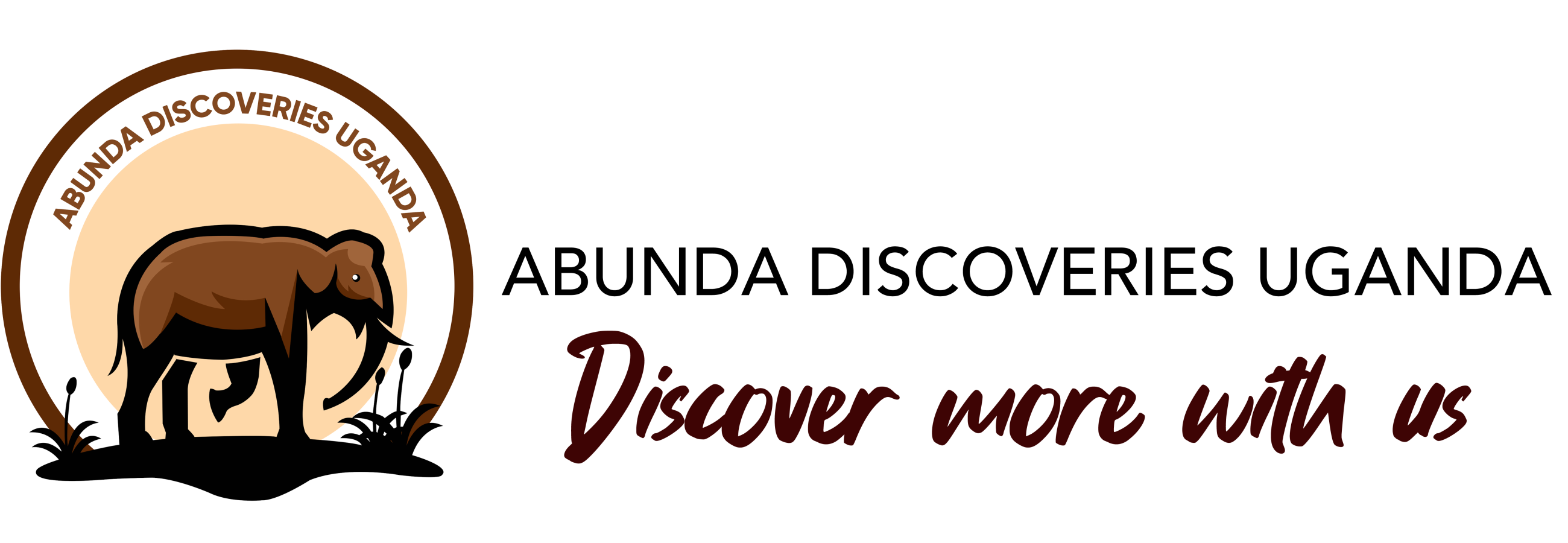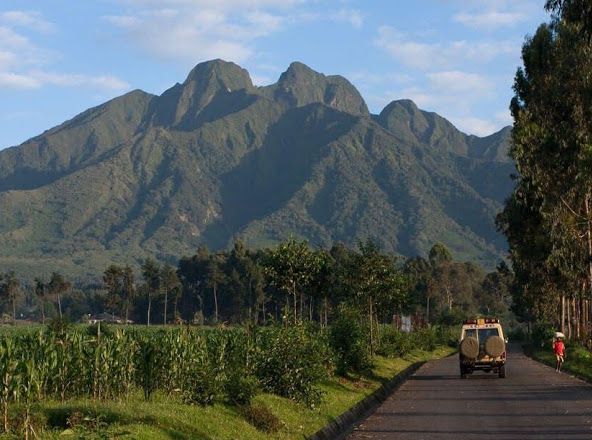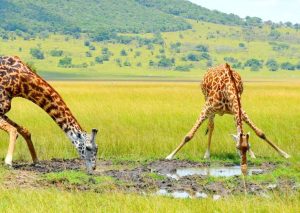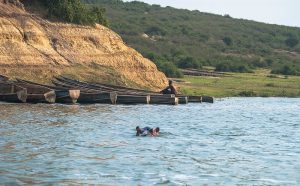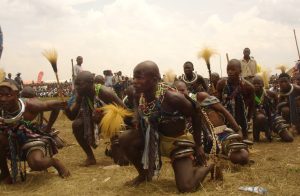You can do mountain hiking in both Rwanda and Uganda, and both countries offer world-class hiking experiences that range from volcanic peaks to lush forested highlands. Whether you’re a seasoned mountaineer or a nature enthusiast looking for a memorable adventure, the hiking trails in Rwanda and Uganda deliver breathtaking landscapes, wildlife encounters, and cultural experiences that few other places on Earth can match.
Here’s a detailed guide to the best mountain hiking options in both countries, ideal for planning your next active journey.
Mountain Hiking in Rwanda
Rwanda, often called the “Land of a Thousand Hills,” offers rugged highland terrain that is ideal for hiking. The country’s most iconic hiking experiences are found in the Volcanoes National Park, home to a chain of dormant volcanoes.
1. Mount Bisoke (3,711 meters)
Location: Volcanoes National Park
Duration: 1-day hike
Difficulty: Moderate to challenging
Why hike it?
Mount Bisoke features a stunning crater lake at the summit and lush montane vegetation. The trail starts at Kinigi and takes about 6–7 hours round-trip, including time at the top.
Highlights:
- Crater lake views
- Lush rainforest with gorilla habitat
- Chance encounters with golden monkeys or forest elephants
2. Mount Karisimbi (4,507 meters)
Location: Volcanoes National Park
Duration: 2-day hike
Difficulty: Challenging
Why hike it?
Karisimbi is the highest volcano in the Virunga range and Rwanda’s tallest mountain. It’s ideal for experienced hikers seeking a high-altitude challenge.
Highlights:
- Camp overnight on the mountain
- Summit above the clouds
- Panoramic views of surrounding volcanoes
3. Twin Lakes & Surrounding Hills
Location: Near Volcanoes National Park
Duration: Half-day to full-day walks
Difficulty: Easy to moderate
Why hike it?
For a gentler, more cultural experience, hiking around Lake Burera and Lake Ruhondo offers incredible views of the Virunga volcanoes and visits to local villages.
Mountain Hiking in Uganda
Uganda’s diverse landscapes include lush forests, volcanic chains, and snow-capped peaks. The country is a paradise for hikers, particularly in the Rwenzori Mountains and Mount Elgon regions.
1. Rwenzori Mountains (Up to 5,109 meters)
Location: Rwenzori Mountains National Park
Duration: 4 to 10-day treks
Difficulty: Strenuous
Why hike it?
Known as the “Mountains of the Moon,” the Rwenzoris are Africa’s third-highest mountain range. Hiking here is rugged, remote, and incredibly rewarding, with glaciers, waterfalls, and rare Afro-alpine vegetation.
Main peak: Margherita Peak (5,109 meters) – Uganda’s highest point
Highlights:
- Snow-capped peaks on the Equator
- Rare plant life (giant lobelias, groundsels)
- Fewer crowds than Kilimanjaro or Mount Kenya
2. Mount Elgon (4,321 meters)
Location: Eastern Uganda, bordering Kenya
Duration: 3 to 5-day treks
Difficulty: Moderate to challenging
Why hike it?
Mount Elgon is a massive extinct volcano with the world’s largest volcanic caldera. Treks are more relaxed compared to the Rwenzoris, and there’s no need for technical gear or altitude acclimatization.
Highlights:
- Caldera views and waterfalls
- Hot springs at the summit
- Rich birdlife and primates
3. Mount Moroto and Mount Kadam (Karamoja region)
Location: Northeastern Uganda
Duration: 2 to 3-day hikes
Difficulty: Moderate
Why hike it?
These off-the-beaten-path hikes offer authentic cultural encounters with the Karimojong people and stunning dry mountain scenery.
Highlights:
- Remote wilderness experience
- Cultural homestays
- Wildlife sightings including leopards and hyrax
When is the Best Time to Go Hiking in Rwanda and Uganda?
Both countries experience two dry seasons, which are best for mountain hiking:
- June to September – Main dry season, excellent for all hikes
- December to February – Short dry season, ideal for higher elevations
Avoid: March–May and October–November (long and short rains), especially for challenging treks like Karisimbi or Rwenzoris where trails can become muddy and unsafe.
Do You Need a Guide for Mountain Hiking?
Yes, guides are mandatory for almost all major hikes in Rwanda and Uganda, especially within national parks. Here’s why:
- Safety in remote or wildlife-inhabited areas
- Navigation and language help
- Cultural interpretation
- Support for local communities and conservation
You’ll also need to register with park authorities, and some treks (like Karisimbi, Rwenzoris, or Elgon) require advance permits and porters.
Packing Essentials for Mountain Hiking
- Good quality hiking boots (waterproof and broken-in)
- Warm layers (especially for Rwenzori or Karisimbi)
- Rain jacket or poncho
- Sunscreen and hat
- Backpack with snacks, water, and first aid
- Sleeping bag (multi-day hikes)
- Trekking poles for support
- Headlamp and extra batteries
Combine Hiking with Wildlife Safaris
One of the best parts of hiking in Uganda or Rwanda is the chance to combine treks with other unforgettable activities, such as:
- Gorilla trekking in Bwindi or Volcanoes NP
- Chimpanzee trekking in Kibale or Nyungwe Forest
- Savannah safaris in Queen Elizabeth, Akagera, or Murchison Falls
With the right itinerary, you can hike a mountain and see the Big Five all in one trip.
Is Mountain Hiking in Rwanda and Uganda Worth It?
Absolutely. Few places in the world offer such diverse, scenic, and culturally rich hiking opportunities within a relatively small region. Whether you want to climb to a glacial peak in the Rwenzoris, trek through a cloud forest in Rwanda, or hike ancient volcanoes, East Africa’s mountain trails are a hiker’s dream.
With the right preparation and an open spirit, mountain hiking in Uganda and Rwanda promises not just physical challenge—but deep, soul-stirring reward.
